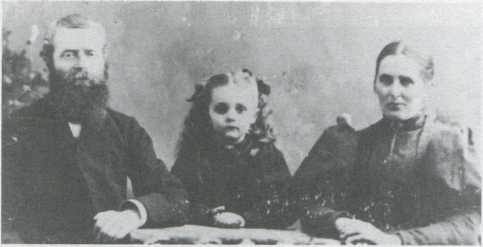|
Winneshiek School in Food Service as a cook and baker for 20 years. Merlin and Elsie both enjoyed ball games of all kinds, golfing, fishing, traveling and spending time with the family. 
Mert and Elsie Rosendahl heading for Hot Springs Village, AR. December 27, 1990 Merlin “Mert’' passed away 6 Mar 1991 of a massive heart attack and is buried in the Burr Oak Cemetery, Burr Oak. Elsie lives in Burr Oak and keeps busy with her family, going to basketball, volleyball, football, baseball and softball games of her children and grandchildren, golfing, traveling and crocheting. Rothmeyer, Linus and Elsie (Kiel)(Elsie Rothmeyer) I am the 5th generation to live on the Kiel farm. I look to the east and see the granary of Great-Great-Grandpa Gunderson. I look to the west and north and see tall Norway pines and evergreens that Grandpa Kiel planted. I see the fields that Dad used to plow with horses. The past is all around our family. There are many childhood hiding places where I dreamed of adventure and riches. I am an IA girl who came back to the farm. I am aware of the past but I am also conscious of the present and future. Time has brought many changes and improvements. The old dirt road on which my sisters and I walked to the country school has been replaced by a graded gravel road, but the hills are the same and wild roses still bloom. The “little white outhouse” is gone, hauled to the ditch years ago. The windmill still stands, a reminder of “getting a pail of water.” The modern submersible pump, hidden beneath the ground, replaced the old pumpjack. New buildings have replaced the chicken coop (my mother’s economic security) and other older buildings, but the animals are of the same kind. The childhood barn is the same, yet different. There are no beautiful black and white cows patiently chewing the fresh hay. There are no soft high mounds of hay to jump in - bales are too hard and dangerous. However there are still nests of baby kittens to hunt for and barn swallows swooping through the doors to feed their young. Why would an IA girl return to the farm? In Jun 1954 Linus Rothmeyer and I were married. “Linny”, a farm boy, also loved the soil and the farm. Both of us finished college, taught school for a year, then it was off to the army and the excitement of traveling. From Fort Sill, OK Linny went to Korea and I went home to teach. At the end of 2 years IA and home appealed greatly. Since there were no sons it was an opportunity for us to take over the family farm. For 38 years we have lived on this land. In the first years after our return we encountered reserve, skepticism and disbelief! Why do college graduates want to come back to the farm? Gradually the people sensed our sincerity and willingness to be part of the IA countryside. Through these years we have worked hard to improve our homestead. We realize the responsibility that is ours as stewards of the land. The joy of farming is ever present, and for the farmer little things count so much—warm spring rains, a new baby calf, smells of fresh mown hay, and coming home over the east hills and gazing on beautifully contoured strips of corn and hay against the setting sun. Sue, our daughter, is the 6th generation to live on this farm. Our family life is still a close relationship. There are always things to do together, tasks big and small; pleasant and unpleasant. As she continues to fulfill her ambitions for the future we are sure that her years associated with the land will have a positive influence. It is the hope of her father and myself that she too will treasure the land that is her legacy in the future years. Rowlee Family(Dawn Sayre) 
My grandfather John Quincy Adams Rowlee, born 1850. Dawn Perry Sass Sayre, eighth daughter of Lydia Cornelia Rowlee, is trying to remember her family’s arrival in Winneshiek County in 1854. The farm was purchased through the Pre-emption Act of Congress in 1841. The deed we have in the family is signed by President Buchanan where 651 hectares of land was paid for. They were farmers and were told of better land in the State of Iowa which they found true. They gathered their animals, every tool that was needed and their possessions in two covered wagons, one driven by horses by my great R-30 See the associated scan to compare with the published information. |
Please, contact the County Coordinator to submit additions or corrections. Winneshiek IAGenWeb Home 
Please read the IAGenWeb Terms, Conditions & Disclaimer ~all of which applies to the Winneshiek Co. website. ~ this page was last updated on Monday, 29 March 2021 |